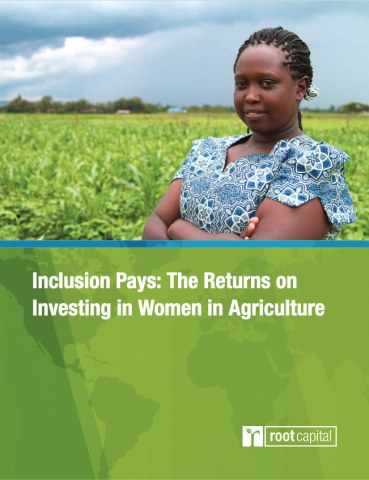Inclusion Pays: The Returns on Investing in Women in Agriculture
Abstract
nclusion pays when it comes to investing in women in
agriculture. Evidence is mounting on the benefit—to women, to
society, and to investors—of investments in gender-inclusive
enterprises. But there has been little data connecting gender
inclusion and business performance among enterprises in
emerging economies; there has been even less data about the
agricultural industry—a sector that 2.5 billion people globally
depend on for their livelihoods, and one in which women receive
only a fraction of total investment.
Over the last 10 years, Root Capital has invested in women
in agriculture by lending to small and medium agricultural
enterprises (SMEs) that are founded, owned, or led by women, or
that have higher women’s participation as managers, employees,
and producers. Using data from Root Capital’s 2012-2020
portfolio, which represents over $1 billion of investments in 552
enterprises, we set out to investigate the relationship between
women’s leadership and participation in agricultural enterprises
and business and loan performance.
We found a clear and compelling business case for investing in
women in agriculture. The results presented in this report show
that investing in agricultural SMEs that are led by or inclusive
of women is not only good for women and society, it’s good for
SMEs and good for investors. In particular, we found that, on
average, enterprises with higher levels of women’s leadership
and/or participation:
• have more stable revenues;
• grow very quickly;
• are more likely to acquire new sources of financing;
• have lower default rates; and
• yield dramatically higher profits on their loans.
Based on these results, this report begins to build the business
case for investing in women in agricultural SMEs. We hope that
these findings not only demonstrate the financial benefits of
investing in more gender-inclusive agri-SMEs, but that they also
catalyze greater investment in these enterprises so that together
we—investors, donors, technical assistance providers, and
others—can close the gender finance gap in agriculture.

